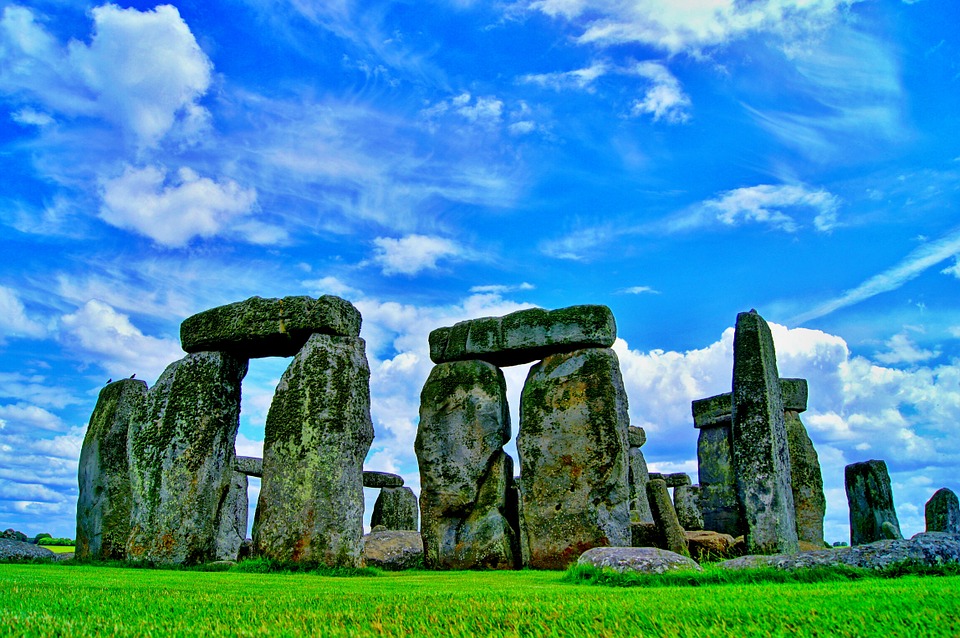How was Stonehenge built?

An enigma of prehistoric civil engineering and a dramatic silhouette on the landscape of Salisbury Plain, the megalithic monuments at Stonehenge are a constant reminder of the
incredible resourcefulness of ancient civilisations.
Construction of Stonehenge was divided into three main stages. The first, between around 3000 and 2500 BCE, involved the creation of an ordinary henge monument (a circular enclosure bounded by banks and a ditch) that was initially used for ceremonies and burials.
The second stage saw the arrival of Welsh bluestones from the Preseli mountains. In around 2150 BCE, men began transporting these four-ton stones to Wiltshire using a combination of rollers and sledges on land, and rafts across the sea and rivers.
At the end of the 240-mile journey the stones were arranged as a double circle in the centre of the Stonehenge site. These bluestones provided a sacred focus due to the stones’ perceived magic healing powers. Once the stones were set up, the site attracted more interest with visitors and pilgrims from all over northern Europe.
In around 2000 BCE, the third phase of construction began when Sarsen stones were transported from a site 25 miles from the monument. These immense stones – the heaviest of which weighed 50 tons – were positioned upright in an outer circle with horizontal lintels running between each vertical.
The history of Stonehenge
3100 BCE – Henge established
The original henge comprised a ditch, an earthen bank and the mysterious Aubrey Holes – a circle of 56 small pits.
2150 BCE – Welsh bluestones arrive
82 stones are transported from the Preseli mountains and arranged as a double circle within the henge.
2000 BCE – Sarsen stones arrive
Each Sarsen is brought to the site from north of Salisbury Plain by 600 men – 500 to pull the sledges with leather ropes and 100 to lay the rollers.
1500 BCE – Bluestones moved
The bluestones are rearranged in the semicircle shape we see today. Some of the original stones were broken up or removed.
Find out more about how Stonehenge was built and learn about a surprising new discovery at the site by watching our video below…
Top 5 facts about Stonehenge
1) Tallest stone
The largest stone of the monument is one of the five Trilithons in the Sarsen Circle. It measures 7.3 metres high and weighs a quite ridiculous 45 tons.
2) Conspiracy theories
Theories for what the site was built for include a place for worship/healing, a burial site, an archaeoastronomical observatory, or even an alien spacecraft landing area.
3) Morning glory
From the centre of the circle facing northeast is an entrance through which someone standing in the centre can see the Sun rise on midsummer morning.
4) The Aubrey holes
Circling the inner edge of the henge are 56 pits called the Aubrey holes. Although their purpose is a mystery, it has been suggested that they may have held timber posts.
5) A henge with Heritage
Stonehenge is owned by the Crown and managed by English Heritage. The surrounding area is National Trust land, and it became a World Heritage Site in 1986.
For more science and technology articles, pick up the latest copy of How It Works from all good retailers or from our website now. If you have a tablet or smartphone, you can also download the digital version onto your iOS or Android device. To make sure you never miss an issue of How It Works magazine, subscribe today!




